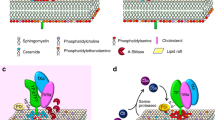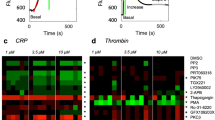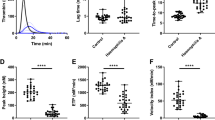Abstract
Although the exact role of calcium in the complex mechanism of blood coagulation is still in some dispute, it is certain that it is a basic element in some of the interactions taking place between the various blood-clotting factors which finally lead to the formation of the prothrombin-converting factor, plasma thromboplastin1. Recently, we2 described an ether-precipitation method for the separation of the latter. Further work, reported herein, on the relation between this important blood-clotting factor and calcium has revealed the presence of two stages in the production of a fully active plasma thromboplastin.
This is a preview of subscription content, access via your institution
Access options
Subscribe to this journal
Receive 51 print issues and online access
$199.00 per year
only $3.90 per issue
Buy this article
- Purchase on SpringerLink
- Instant access to full article PDF
Prices may be subject to local taxes which are calculated during checkout
Similar content being viewed by others
References
Biggs, R., Douglas, A. S., and MacFarlane, R. G., J. physiol., 119, 89 (1953).
Nour-Eldin, F., and Wilkinson, J. F., J. Physiol., 132, 164 (1956).
Biggs, R., and Douglas, A. S., J. Clin. Path., 6, 23 (1953).
Author information
Authors and Affiliations
Rights and permissions
About this article
Cite this article
NOUR-ELDIN, F., WILKINSON, J. Two Stages in the Formation of Active Plasma Thromboplastin. Nature 178, 856–857 (1956). https://doi.org/10.1038/178856a0
Issue date:
DOI: https://doi.org/10.1038/178856a0



